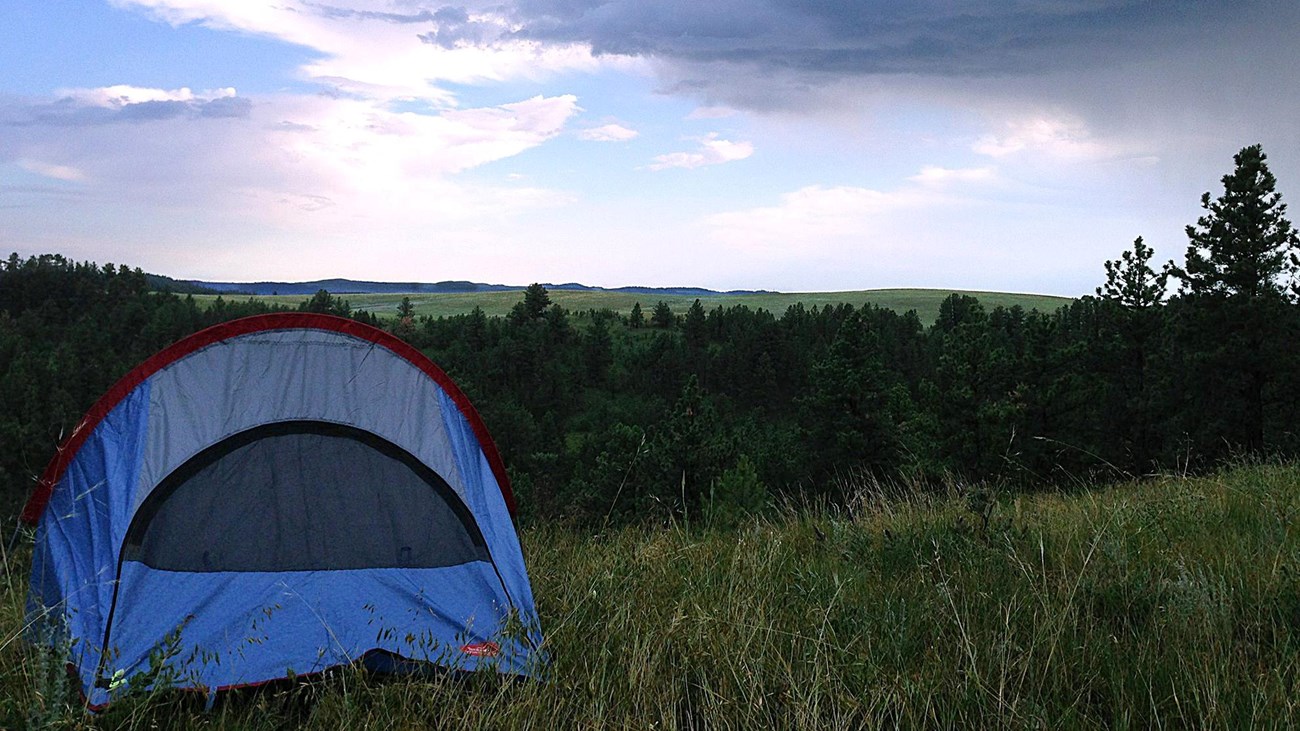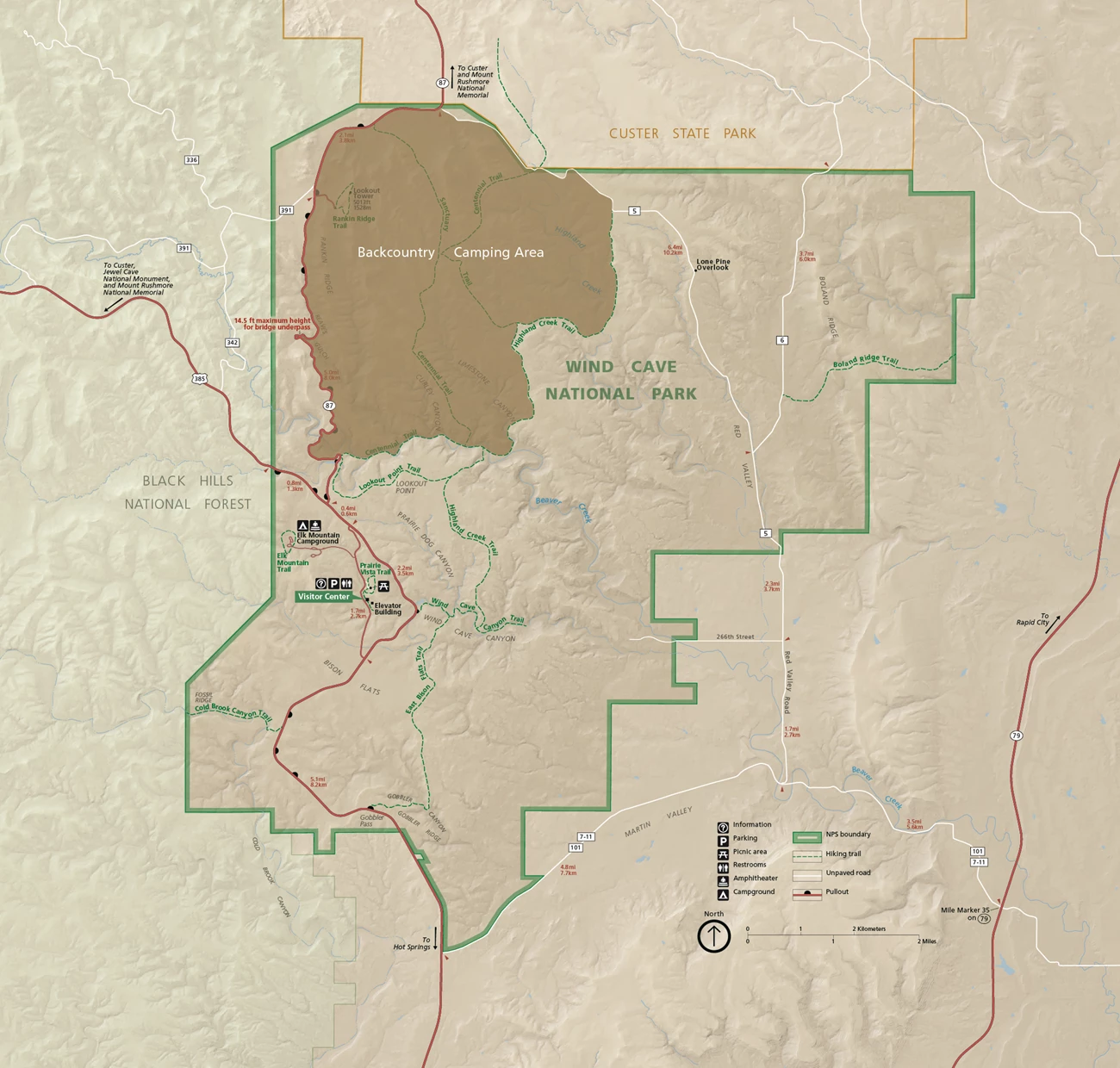Last updated: August 18, 2024
Thing to Do
Backcountry Camping at Wind Cave

NPS Photo / Kim Acker
A free permit is required for all backcountry camping. Permits are issued at the visitor center and help monitor use. Please follow all instructions attached to the permit.
Please call the visitor center if you have any questions: (605) 745-4600

Regulations
-
All backcountry campsites must be at least 1/4 mile from and out of sight of any road. Campsites also must be 100 feet (33 meters) away from any trail or water source.
-
Please practice Leave No Trace principles during your visit. Pack out all items you bring in with you.
-
Food, cooking utensils, and garbage must be stored so wildlife cannot access it. This helps keep wildlife from seeking handouts from people.
-
Backcountry campers are limited to two nights per site and seven nights per trip.
-
Carry all the drinking water you will need as there are few water sources in the park. Boil or filter any water obtained in the backcountry.
-
Open fires are not allowed. Use self-contained fuel stoves for cooking in the backcountry. Wildfire threat is moderate to extreme most of the year.
-
Do not remove or disturb plants, wildlife, antlers or bones, artifacts, or any other cultural or natural feature. All natural and cultural resources within the park are protected by federal law.
-
Car camping is not permitted outside the Elk Mountain Campground.
Common Backcountry Camping Locations
Many hikers prefer to start at either of the Centennial Trailheads. One is located 1.5 miles north of the visitor center, and the other is east of Hwy 87 on NPS 5. The largest area open to backcountry camping is the area south of Sanctuary Trail and north and west of the Centennial Trail. This forested area provides backcountry campers with more sheltered sites than other parts of the park. Its size and proximity to Hwy 87 makes it easy for hikers to park and travel a short distance to find a campsite.
Safety Information
-
Bring a park map with you and know the route you intend to take.
-
Do not approach any wild animal. Visitors must stay at least 25 yards (23 meters) from all wildlife, although it is strongly recommended to stay farther away from bison. Bison may appear tame but are unpredictable and dangerous and may charge without warning. They are more aggressive during the calving and mating season from May through August.
-
Prairie rattlesnakes and ticks are common throughout the park in the summer months.
-
Check the weather before heading out. During the hot summer months, severe thunderstorms are common and may arise with little warning. These storms may bring high winds and large hail.
-
Poison ivy is common throughout the park, particularly in wetter areas.
